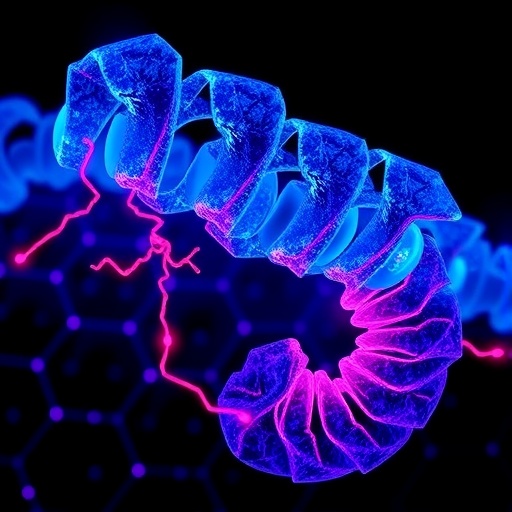
Credit: Sanford Burnham Prebys Medical Discovery Institute
La Jolla, Calif., December 7, 2017 – A new study led by researchers at Sanford Burnham Prebys Medical Discovery Institute (SBP), in collaboration with researchers at Eunice Kennedy Shriver National Institute of Child Health and Human Development, part of the National Institutes of Health, identifies a mechanism that explains the development of hyperaldosteronism. The findings, published in JCI Insight, offer a path for drug discovery to treat the condition, which causes the majority of secondary hypertension.
About 10 percent of people with high blood pressure have secondary hypertension, meaning that the root cause of the disease is known. In such cases, when the root cause is treated, blood pressure usually returns to normal or is significantly lowered. Hyperaldosteronism, a condition in which the adrenal glands produce too much aldosterone, is the most common cause of secondary hypertension.
"Our research, based on a genetic model, identifies an unexpected layer in the regulation of adrenal gland development and in hyperaldosteronism," says Ze'ev Ronai, Ph.D., chief scientific advisor of SBP and senior author of the paper. "The findings are important because they identify a previously unknown regulatory axis that controls aldosterone levels, thus offering new avenues for drug discovery of secondary hypertension.
The body's adrenal glands produce a number of essential hormones, including aldosterone, which balances sodium and potassium in the blood. In hyperaldosteronism, the adrenal glands produce too much aldosterone, leading to low levels of potassium and increased sodium. Excess sodium leads to water retention, increasing the blood volume and blood pressure.
"We initially found that the structure of the adrenal glands in mice lacking the Siah1 ubiquitin ligase gene was markedly different and they had increased levels of aldosterone," says Marzia Scortegagna, Ph.D., staff scientist in Ronai's laboratory and lead author of the paper. "Upon further examination, we noted elevated levels of PIAS1, a Siah1 controlled protein, which is a key regulator of cholesterol biosynthesis, the precursor for aldosterone synthesis."
"Siah1 is a ubiquitin ligase that plays an important role in a number of cellular pathways, implicated in neurodegeneration and cancer" says Ronai. "Our results are the first to identify the role of this gene in hyperaldosteronism through its control of cholesterol biosynthesis involving PIAS1."
"Patients that suffer from hyperaldosteronism exhibit mutations or epigenetic deregulation of the key pathway components, pointing to the relevance of our findings to humans and the justification for further exploration of this pathway for therapeutic purposes," says Constantine Stratakis, M.D., head of the Section on Endocrinology and Genetics at the National Institute of Child Health and Human Development (NICHD) at the NIH, and co-author of the study.
###
Co-authors of the study include : Annabel Berthon, Andreas Giannakou, (NICHD), Guillermina Garcia, Jian-Liang Li, Brian James, Robert C. Liddington, (SBP), and José G. Vilches-Moure (Stanford University Medical Center)
This study was funded, in part, by NCI grant R35 CA197465-01.
About SBP
Sanford Burnham Prebys Medical Discovery Institute (SBP) is an independent nonprofit medical research organization that conducts world-class, collaborative, biological research and translates its discoveries for the benefit of patients. SBP focuses its research on cancer, immunity, neurodegeneration, metabolic disorders and rare children's diseases. The Institute invests in talent, technology and partnerships to accelerate the translation of laboratory discoveries that will have the greatest impact on patients. Recognized for its world-class NCI-designated Cancer Center and the Conrad Prebys Center for Chemical Genomics, SBP employs about 1,100 scientists and staff in San Diego (La Jolla), Calif., and Orlando (Lake Nona), Fla. For more information, visit us at SBPdiscovery.org or on Facebook at facebook.com/SBPdiscovery and on Twitter @SBPdiscovery.
Media Contact
Susan Gammon
[email protected]
858-795-5012
@sbpdiscovery
http://www.sbpdiscovery.org/




